SOS: Save 300,000 Budget Private Schools
An estimated 300,000 recognised/unrecognised private schools countrywide with a massive enrolment of 60 million children are endangered because of non-compliance with infrastructure norms prescribed by the Right to Education Act, 2009. Unsurprisingly 1.2 million dysfunctional government schools are exempt
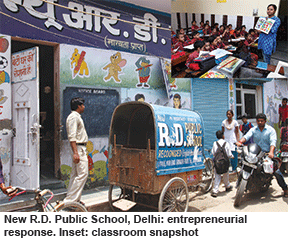 SIX MONTHS AGO, the Kailash Public School in Sehna village (pop. 20,000) in Punjab’s Barnala district experienced the daily buzz and excited chatter of 60 children turned out in neat uniforms. Today the class I-V school housed on a 2,840 sq. ft plot wears a desolate look with dusty blackboards and benches. According to the school’s promoter Praveen Kumar, Kailash Public (estb. 2004) was among the village’s most popular “fully-recognised private primary schools offering quality education” at an all-inclusive annual fee of Rs.3,650.
SIX MONTHS AGO, the Kailash Public School in Sehna village (pop. 20,000) in Punjab’s Barnala district experienced the daily buzz and excited chatter of 60 children turned out in neat uniforms. Today the class I-V school housed on a 2,840 sq. ft plot wears a desolate look with dusty blackboards and benches. According to the school’s promoter Praveen Kumar, Kailash Public (estb. 2004) was among the village’s most popular “fully-recognised private primary schools offering quality education” at an all-inclusive annual fee of Rs.3,650.
But in November last year, a notice issued to the school by the district education department ordered it to shut down in the middle of the academic year. The notice alleged that the school had not complied with s.12 (1) (c) of the Right to Free and Compulsory Education Act (RTE), 2009, which makes it obligatory for private schools to reserve 25 percent capacity in class I for poor children in their neighbourhoods and provide them free education until class VIII. Kumar’s protestations that the school hadn’t received any admission applications under s.12 were not entertained by the district education officials, the “local authority” under the RTE Act.
Kailash Public is one of 2,983 budget private schools (BPS) forcibly shut down in the past academic year (2013-14) by governments in nine states (Punjab, Haryana, Andhra Pradesh, Tamil Nadu, Uttarakhand, Uttar Pradesh, Bihar, Odisha and Jharkhand) for violations of the RTE Act. Another 5,097 budget schools have been served closure notices for non-compliance with the Act.
Enacted in 2009 after a constitutional amendment (Article 21-A), the RTE Act makes it mandatory for the State (i.e Central, state and local governments) to provide free and compulsory elementary education (class I-VIII) to every child between 6-14 years of age, and prescribes minimum infrastructure, teacher-pupil ratio and other norms for all schools. S.19 of the RTE Act requires all private schools to comply with infrastructure and teacher-pupil ratio norms stipulated by the Schedule of the Act within three years from April 1, 2010 when the Act became operational. With the stipulated norms which include provision of a playground unaffordable for the great majority of BPS promoters, an estimated 300,000 recognised/unrecognised budget private schools with a massive enrolment of 60 million children are confronted with the threat of closure. Unsurprisingly, the country’s 1.20 million government schools are exempt from the punitive provisions of s.19 (see box p.84).
India’s 300,000 budget private schools are a unique phenomenon and live demonstration of the inexorable law of supply and demand, as also of the fierce determination of struggling parents at the bottom of India’s iniquitous social hierarchy to secure a good future for their children. Sited mainly in ubiquitous urban slums, tier II towns and in rural India, BPS are the response of small-time entrepreneurs to India’s dysfunctional government schools characterised by crumbling infrastructure, multi-grade classrooms, chronic teacher absenteeism, corporal punishment, English language aversion and poor learning outcomes.
Almost surreptitiously, BPS have multiplied as bottom-of-pyramid households — even if not government leaders and bureaucrats — cottoned on that real education (including English language learning) is the passport to socio-economic upward mobility. With even dirt-poor households ready to allocate large slices of modest incomes for real primary/elementary education, entrepreneurs have been quick to step forward and offer modestly priced contemporary schooling to children from low-income but high aspiration households. Budget private schools are typically crammed into small premises — often rented — family homes, and even rooms above shops, charging tuition fees ranging from Rs.70-150 per month in rural areas, and Rs.200-600 in urban India.
With the compliance deadline having expired on March 31, 2013, bribes-hungry education inspectors have begun closing down BPS of uncooperative promoters, invoking s.19 of the Act. It’s pertinent to note that private schools are required “to fulfil such norms and standards at its own expenses” and that all non-government schools are obliged to obtain a recognition certificate from the local or state government, failing which they will not be allowed to conduct classes (s.18 (4)). Moreover, BPS promoters/proprietors who “continue to run a school after recognition is withdrawn shall be liable to a fine which may extend to one lakh rupees and in case of continuing contraventions to a fine of ten thousand rupees for each day during which such contravention continues” (s.19 (5)).
With state education bureaucrats and officials invested with wide discretionary powers beginning to apply the harshly punitive provisions of the RTE Act to budget private schools which are serving a felt need, there’s rising anger and indignation within a small minority of knowledgeable educationists. “By authorising the shut-down of budget private schools which serve poor parents, the RTE Act is taking away education instead of guaranteeing it. In many states, closures are arbitrary and imposed without due process. For instance in Punjab, schools are getting phone calls ordering them to close down, without inspection, notice, or response time. There’s no regard for students’ future, loss of teachers’ employment or any heed paid to due process of law. This will adversely impact national productivity, the economy and sustainable growth. Unless the Central government amends the RTE Act, budget school closures across the country will intensify,” warns Dr. Parth Shah, president of the Centre for Civil Society (CCS), a top-ranked Delhi-based think-tank.
IN 2011, CCS promoted the National Independent Schools Alliance (NISA) to create a national platform for BPS to press the Central and state governments for policy changes. Representing 8,000 budget private schools in 17 states, NISA estimates indicate that 19,414 BPS in 17 states have been shut down or face closure notices, impacting over 3.4 million children from bottom-of-pyramid households. “Through NISA we are educating the government that budget private schools fulfil an important social role and must be allowed to operate,” adds Shah.
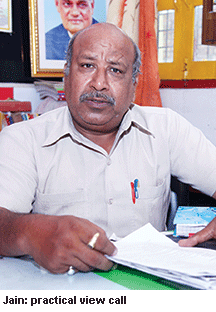 Even if not in the states, in Delhi angry protests of CCS, NISA and NGOs have forced the state government to extend the s.19 compliance deadline to September this year. Consequently, the hand of marauding education ministry officials has been stayed in the NCR (national capital region). “In Delhi we have succeeded in preventing the closure of any of the state’s 2,250 unrecognised BPS with an aggregate enrolment of 500,000 students. Over 1,000 have been given temporary recognition and the continuance applications of others are being processed. Following our agitation the state government has agreed to draw up separate norms and standards for five categories of private schools. All deadlines have been extended to September and our writ petition in the high court is pending hearing. The government needs to take a practical view of implementing the RTE Act. How will it provide for the education of 500,000 children if it shuts down budget private schools?” queries R.C. Jain, president of the Delhi State Public Schools Management Association (estb. 1992) which has a membership of 800 private schools in Delhi NCR.
Even if not in the states, in Delhi angry protests of CCS, NISA and NGOs have forced the state government to extend the s.19 compliance deadline to September this year. Consequently, the hand of marauding education ministry officials has been stayed in the NCR (national capital region). “In Delhi we have succeeded in preventing the closure of any of the state’s 2,250 unrecognised BPS with an aggregate enrolment of 500,000 students. Over 1,000 have been given temporary recognition and the continuance applications of others are being processed. Following our agitation the state government has agreed to draw up separate norms and standards for five categories of private schools. All deadlines have been extended to September and our writ petition in the high court is pending hearing. The government needs to take a practical view of implementing the RTE Act. How will it provide for the education of 500,000 children if it shuts down budget private schools?” queries R.C. Jain, president of the Delhi State Public Schools Management Association (estb. 1992) which has a membership of 800 private schools in Delhi NCR.
Meanwhile it’s also patently obvious that the enterprising community of BPS promoters — some of whom have decades of experience in managing low-cost primary-secondaries — needs to be encouraged because the cost of complying with the provisions of s.19 (and s.12(1) (c)) is daunting for small-time budget education entrepreneurs. According to a study, Cost of Compliance to Norms and Standards Set Forward by Sections 18 and 19 of RTE, conducted by Centre for Civil Society, BPS managements will need to increase tuition fees four-fold to meet the infrastructure, teacher-pupil ratio and other norms prescribed by the Act. Using “conservative estimates”, CCS researchers computed the minimum expense each BPS will have to incur to upgrade facilities to RTE standards at Rs.24 lakh.
Mohammed Shafi, promoter of the Monarch High School, a K-10 BPS operating inside a rented two-storey building in the congested, winding bylanes of old Hyderabad, rules out raising the Rs.350-600 monthly tuition fee paid by his 450 students of both sexes as a viable option, as his parents community comprising mainly daily wage workers and vendors, is already financially stretched by persistent inflation.
“Norms such as providing a playground, raising teachers’ salaries and providing free education to 25 percent of children are unrealistic, and can’t be fulfilled without sharply raising tuition fees. The truth is that no parent wants to send her child to the free government school in our area because our pass percentage in the class X board exam is 90 whereas in the neighbouring government school, it’s only 40 percent. Now despite providing superior K-10 education, the RTE Act has put us at the mercy of education officials,” says Shafi, a commerce and education (B.Ed) graduate of Osmania University who self-financed his education through tuitions, and promoted Monarch in 1999 with a capital of Rs.50,000 to provide affordable English-medium education to children of old Hyderabad’s neglected Muslim community.
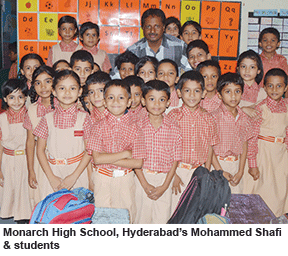 AITHOUGH CLASSIFIED as a ‘recognised’ BPS affiliated with the Andhra Pradesh Board of Secondary Education, to all intents and purposes Monarch High is a regular English-medium K-10 school with 450 children and 15 teachers on its muster rolls. EW correspondent Aruna Ravikumar, who visited the school, reports well-disciplined neatly uniformed children, 100 percent teacher attendance, buzzing classrooms and usable separate toilets for girl children.
AITHOUGH CLASSIFIED as a ‘recognised’ BPS affiliated with the Andhra Pradesh Board of Secondary Education, to all intents and purposes Monarch High is a regular English-medium K-10 school with 450 children and 15 teachers on its muster rolls. EW correspondent Aruna Ravikumar, who visited the school, reports well-disciplined neatly uniformed children, 100 percent teacher attendance, buzzing classrooms and usable separate toilets for girl children.
Monarch is one of the estimated 5,000 self-styled ‘English-medium’ private budget schools in Hyderabad which arguably hosts the largest number of BPS of any habitation countrywide. It was in Hyderabad in the early years of the new millennium that the celebrated and widely-travelled intellectual adventurer Dr. James Tooley, professor of education policy at Newcastle-upon-Tyne University, stumbled upon the BPS genre of institutions.
According to Tooley, BPS is a global phenomenon and the most compelling argument in favour of the social benefits of privately provided primary-secondary education. “Poor parents send their children to private schools because they are better.
They are better than public schools with regard to higher teacher commitment and smaller class sizes. They are better on the vast majority of school inputs. They are better in academic achievement even after controlling for background variables. And not only are they better in all these respects, they are cheaper to run at least in terms of teachers salaries,” writes Tooley in The Beautiful Tree (Viking/Penguin 2009), a deeply-researched account of modest but committed education entrepreneurs who have stepped into the breach created by pampered dysfunctional government schools, to provide acceptable quality primary schooling to children around the world.
DR. TOOLEY’S CONCLUSIONS about the superiority of privately provided primary education in third world countries and India in particular, are supported by Dr. Karthik Muralidharan, professor of economics at the University of California, San Diego. In a research paper titled The Aggregate Effect of School Choice: Evidence from a Two Stage Experiment in India (2013), Muralidharan confirms that BPS deliver better learning outcomes and are almost three times as cost effective as government primaries. The per capita cost of education delivery in a government primary varies between Rs.16,000-20,000 per year, cf. Rs.3,500-7,500 in a BPS. Moreover, BPS students have a longer school day, a longer school year, negligible teacher absenteeism (cf. government schools where an estimated 25 percent of teachers are absent everyday) and superior in-classroom teaching, even though their teachers are paid very modestly (Rs.2,000-12,000 per month) compared to government primary teachers (Rs.23,000-30,000).
Undoubtedly greater teacher commitment and accountability, better learning outcomes and English-medium education are the prime factors prompting a multiplying number of low-income but aspirational households to flee free-of-charge government schools for budget private schools countrywide (see box p.88). “The personal attention that teachers pay to my daughter and better quality education offered are the reasons I chose New R.D. Public School over the free government school where teachers are irregular and don’t teach. We don’t mind paying tuition fees if our children are better prepared for jobs and employment. I studied in a government school but didn’t learn much. I don’t want my children to suffer a similar fate,” says Anju, a housewife and mother of Prachi, a nursery student of New R.D. Public School, a BPS in Delhi which levies monthly tuition fees between Rs.375-500 per child.
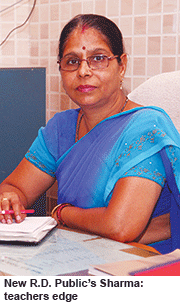 Santosh Sharma, a graduate of Delhi University and principal of New R.D. Public School, concurs that teacher attendance and accountability are the school’s top priorities. “Most of our students are first generation learners, children of migrant labour. Our teachers have to work very hard inside and outside classrooms to ensure they don’t drop out. This school’s reputation is built on the excellent teaching and mentoring we offer. In fact, we have to refuse admission to many students,” says Sharma.
Santosh Sharma, a graduate of Delhi University and principal of New R.D. Public School, concurs that teacher attendance and accountability are the school’s top priorities. “Most of our students are first generation learners, children of migrant labour. Our teachers have to work very hard inside and outside classrooms to ensure they don’t drop out. This school’s reputation is built on the excellent teaching and mentoring we offer. In fact, we have to refuse admission to many students,” says Sharma.
Sited in a three-storey 18-room building in one of the national capital’s slum resettlement areas known as Welcome in East Delhi, New R.D. Public (estb. 2004) is a nursery-class V English-medium school with an enrolment of 600 children nurtured by 21 teachers. But for a playground (which it substitutes by using a local park) and boundary wall, the school complies with all s.19 infrastructure norms and boasts a library of 1,200 books, separate toilets for girls and boys, and drinking water facilities.
IT’S NOT ONLY IN Delhi that harassment of BPS has been stayed because of the spirited intervention of CCS, NISA and conscientious educationists aware of their important contribution to improving children’s learning outcomes. Elsewhere too, there’s dawning awareness of the socio-economic value of budget private schools. Down south in Bangalore, the K-10 state board-affiliated Shri Sharada Vidya Niketan School, housed in a three-storey residential building in a narrow lane, is proud of its library with 1,000 books, separate toilets for girl and boy students, drinking water facilities, an audio-visual room and a common laboratory. Since 2012, this English-medium school, which has 600 students mentored by 19 teachers, has admitted poor neighbourhood children into its kindergarten as mandated by s.12 (1) (c) of the RTE Act.
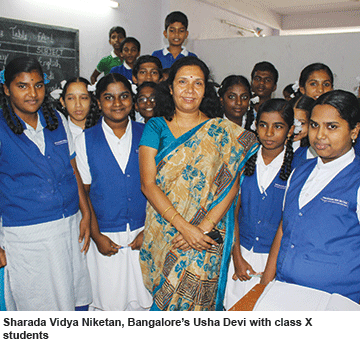 “Though it’s an additional burden, we have admitted RTE quota students for whom the state government reimburses only Rs.5,000 per student against our annual fee of Rs.7,500. Apart from this imposition, the state government’s education department has left budget private schools free of harassment. I believe that’s because they realise we are contributing towards preparing the English-speaking graduates responsible for the success of Karnataka’s booming BPO and IT industries. The country’s economic growth rate and development will be hard hit if schools such as ours are derecognised,” says Usha Devi, promoter-principal who gave up a career in the IT industry (HCL, Computer Point) to promote Shri Sharada Vidya Niketan in 1994.
“Though it’s an additional burden, we have admitted RTE quota students for whom the state government reimburses only Rs.5,000 per student against our annual fee of Rs.7,500. Apart from this imposition, the state government’s education department has left budget private schools free of harassment. I believe that’s because they realise we are contributing towards preparing the English-speaking graduates responsible for the success of Karnataka’s booming BPO and IT industries. The country’s economic growth rate and development will be hard hit if schools such as ours are derecognised,” says Usha Devi, promoter-principal who gave up a career in the IT industry (HCL, Computer Point) to promote Shri Sharada Vidya Niketan in 1994.
Yet perhaps the most disquieting feature of the RTE Act is that it has vested wide discretionary powers in government officials, to transform BPS promoters and managements who are fulfilling a strong market need for education, into transgressors.
According to media reports, 1,400 private schools in Maharashtra have been issued closure notices even as shocking off-the-record stories of education inspectors and bureaucrats extorting bribes for breaches of s.19 and Schedule provisions are doing the rounds. With the state government’s RTE Rules amplifying the discretionary powers of education ministry officials to derecognise schools for non-compliance of s.19 norms, flimsy reasons are being cited to threaten derecognition.
For instance, the 25-year-old St. Mary’s High School (SMHS, estb. 1989), sited in the Mumbai suburb of Kalyan East, was slapped with a derecognition notice for thin attendance of students on the day of inspection. Housed on a 2,000 sq. metre campus, SMHS’ two-storey building boasts 30 classrooms and narrow staircases, but separate toilets for boys and girls, drinking water, a common laboratory and library with 14,614 books in addition to a small common area used for play. Despite this not inconsiderable investment in premises and infrastructure, in June last year the school which has 1,832 students (annual tuition fee Rs.12,000-15,000) instructed by 78 teachers, was derecognised on the basis of a random inspection conducted four years ago.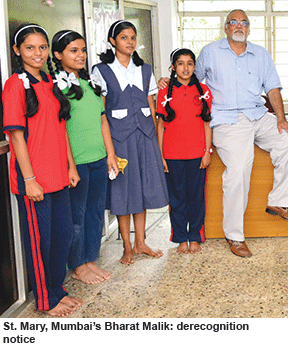
“At the hearing, one of the reasons put forward for non-compliance was that on the day of inspection, average attendance was less than 50 percent, inaccurate because our records clearly show it was 99 percent. After many protests and appeals, SMHS was granted temporary recognition subject to renewal every year. Permanent recognition is being denied even though we are fully compliant with the RTE Rules and have consistently produced excellent results with all students clearing the class X exam,” says Bharat Malik, promoter-director of SMHS.
THE DETAILED INFRASTRUCTURE norms imposed on private schools, and the stringent punitive powers vested in education bureaucrats of state governments by s.19 of the RTE Act are particularly galling for BPS promoter-entrepreneurs because the country’s 1.2 million government schools are exempt from the Act’s penal provisions. The Union HRD ministry’s RTE: The 3rd Year report released in April, admits that 31 percent of government/aided primary schools still don’t provide separate toilet facilities for girl children; 44 percent lack disability ramps; 39 percent don’t have boundary walls, and 40 percent don’t have kitchen/sheds to prepare free mid-day meals. Moreover, only 37 percent of the country’s 1.2 million government schools meet the prescribed teacher-pupil ratio of 1:30, and 9 percent (over 90,000) make do with only one teacher.
Unsurprisingly, learning outcomes in government schools are abysmal. As per the Annual Status of Education Report (ASER) 2013 published by education NGO Pratham, the reading and maths ability of children in India’s rural government schools is 20-25 percentage lower than those of children in rural private schools.
Moreover, informed educationists question the heavy emphasis of the RTE Act on inputs rather than outcomes. “The most fundamental problem with the norms and conditions stipulated by the RTE Act is that they are based on a flawed idea of what constitutes quality in education. Most of the norms and conditions stipulated by s. 19 of the Act relate to inputs into schooling such as insistence on teachers with pre-service teacher training; maximum prescribed pupil-teacher ratios (30:1); owned rather than rented buildings with playground; and payment of government-prescribed salaries to teachers. Internationally available — and scanty Indian — research indicates there’s no correlation between the prescribed inputs and student achievement or learning outcomes,” wrote Dr. Geeta Kingdon, chair of education economics and international development at the Institute of Education, University of London, in an essay contributed to EducationWorld (November 2013).
Given that learning outcomes of fees-levying budget private schools are superior — as evidenced by the consistently rising number of bottom-of-pyramid households preferring them to free-of-charge government schools — official policy should be to encourage development of their infrastructure to s.19 norms. Therefore instead of shutting them down, their owners/promoters should be offered soft loans for infrastructure expansion by state governments and/or nationalised banks. Moreover, several provisions of the RTE Act need to be amended in the public interest.
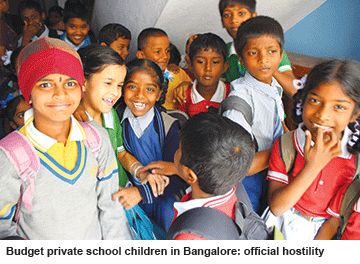 COMMENTS JAN S. RAO, former director of the School Choice Campaign of the Centre for Civil Society, in an essay written for EducationWorld more than three years ago: “One solution to their problems could be to dilute the floor area requirement and liberally grant recognition to schools with adequate rooms, sufficient ventilation and some open spaces. Most budget schools have 15-20 students per class and therefore it would make more sense to prescribe the minimum floor area per child rather than size of classrooms. Moreover, teachers’ salaries could be decided on the basis of tuition fees schools charge rather than on the basis of government school norms. And since in most urban areas it is impossible for budget schools to offer playgrounds, the RTE Act rules should be amended to mandate that there is a park/open area in the vicinity which students can use for play.” (EW October 2010).
COMMENTS JAN S. RAO, former director of the School Choice Campaign of the Centre for Civil Society, in an essay written for EducationWorld more than three years ago: “One solution to their problems could be to dilute the floor area requirement and liberally grant recognition to schools with adequate rooms, sufficient ventilation and some open spaces. Most budget schools have 15-20 students per class and therefore it would make more sense to prescribe the minimum floor area per child rather than size of classrooms. Moreover, teachers’ salaries could be decided on the basis of tuition fees schools charge rather than on the basis of government school norms. And since in most urban areas it is impossible for budget schools to offer playgrounds, the RTE Act rules should be amended to mandate that there is a park/open area in the vicinity which students can use for play.” (EW October 2010).
Official hostility to BPS is squarely in consonance with Left/socialist dogma which insists that unaccountable government bureaucrats are better judges of children’s education than their own parents. But this premise was firmly rebutted by the Supreme Court recently in State of Karnataka & Anr. vs. Associated Managements of (Government Recognised Unaided English Medium) Primary & Secondary Schools & Ors. (Civil Appeal Nos. 5166-5190 of 2013). A five-judge bench of the apex court held that parents should have the freedom to choose the medium of instruction of their children, notwithstanding expert opinion to the contrary, and that schools cannot be derecognised because they don’t instruct primary children in their mother tongue or vernacular language even if grant of NOC (no-objection) certificate for starting a primary was conditional upon adherence to a commitment made to that effect. By the same reasoning, the RTE Act cannot derecognise private schools for infrastructure deficiencies without providing conveniently accessible superior alternative schooling.
“Despite free education, free meals, free uniforms and books offered by government schools, poor parents prefer fees-levying private schools because they believe the latter deliver better learning outcomes, teacher accountability and discipline. The Central and state governments need to urgently amend the RTE Act and move away from input and infrastructure-centric school recognition norms and allocate greater weightage to academic and co-scholastic learning outcomes. Together with budget private schools, they should draw up regulatory standards by introducing self-assessment tools and minimum quality metrics which will enable them to get quick formal recognition. The government has a responsibility to increase the school choice of parents. Simultaneously the public needs to vociferously protest the closure of BPS which are making a great contribution to the Indian economy,” says Dr. Parth Shah, president of CCS.
Quite clearly, the antidote to stemming the exodus of children from free-of-charge government schools is improvement of teaching-learning standards and learning outcomes within them, not shutting down India’s 300,000 budget private schools. If closure of BPS for non-compliance with s.19 of the RTE Act is not urgently halted, it will jeopardise the aspirations and future of 60 million children desperate to break out of the vicious cycle of ignorance and poverty, with dangerous implications for the Indian economy and society.
With Autar Nehru (Delhi), Aruna Ravikumar (Hyderabad) & Nadia Lewis (Mumbai)





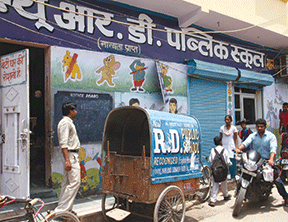











Add comment